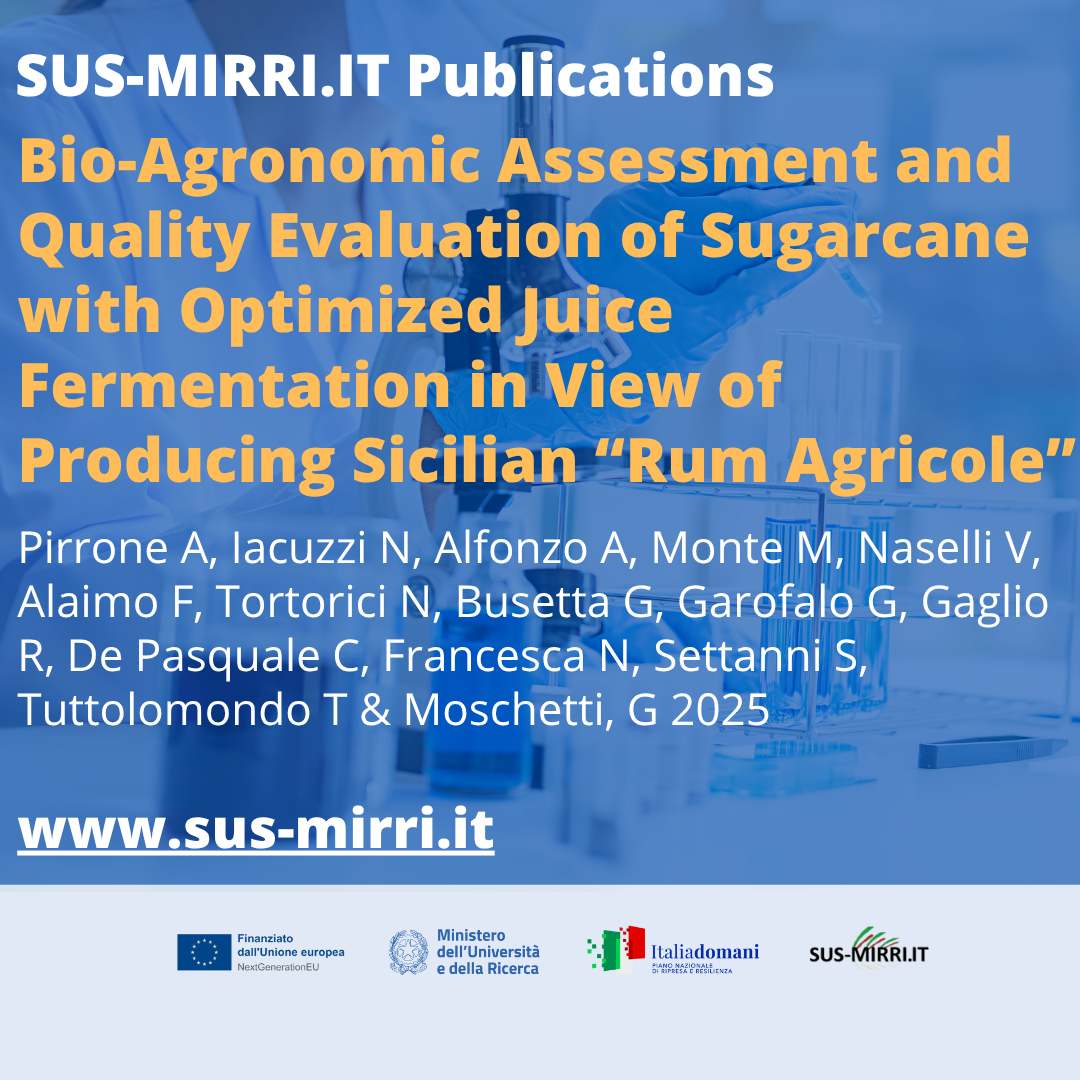Pirrone A, Iacuzzi N, Alfonzo A, Monte M, Naselli V, Alaimo F, Tortorici N, Busetta G, Garofalo G, Gaglio R, De Pasquale C, Francesca N, Settanni S, Tuttolomondo T & Moschetti, G 2025 Bio-Agronomic Assessment and Quality Evaluation of Sugarcane with Optimized Juice Fermentation in View of Producing Sicilian “Rum Agricole”. Applied Science 15(14) 7696 https://doi.org/10.3390/app15147696
Abstract
Sugarcane (Saccharum spp. L.), traditionally cultivated in tropical and subtropical regions, is being explored for its agronomic viability in Mediterranean climates. This study assessed the bio-agronomic performance of seven sugarcane varieties and two accessions grown in Sicily, to enhance the fermentation process to produce rum agricole, a spirit derived from fresh cane juice. Agronomic evaluations revealed significant varietal differences, with juice yields of 5850−14,312 L ha−1 and sugar yields of 1.84–5.33 t ha−1. Microbial control was achieved through the addition of lactic acid, which effectively suppressed undesirable bacterial growth and improved fermentation quality. Furthermore, the application of two selected Saccharomyces cerevisiae strains (MN113 and SPF21), isolated from high-sugar matrices such as manna and honey byproducts, affected the production of volatile compounds, particularly esters and higher alcohols. Sensory analysis confirmed a more complex aromatic profile in cane wines fermented with these selected yeasts, with overall acceptance scores reaching 7.5. Up to 29 aroma-active compounds were identified, including ethyl esters and higher alcohols. This research represents the first integrated approach combining lactic acid treatment and novel yeast strains for the fermentation of sugarcane juice in a Mediterranean context. The findings highlight the potential for high-quality rum agricole production in Sicily.
Read more at https://www.mdpi.com/2076-3417/15/14/7696



